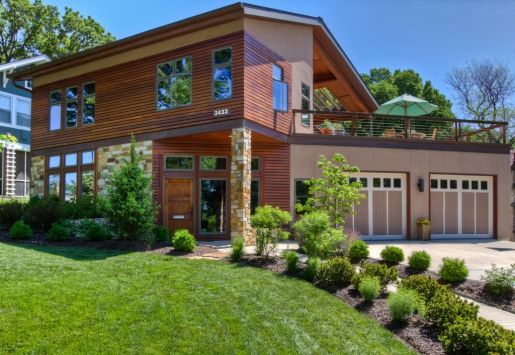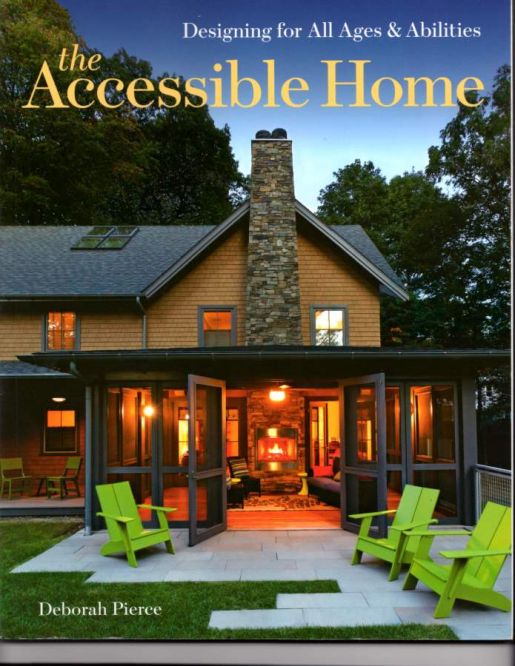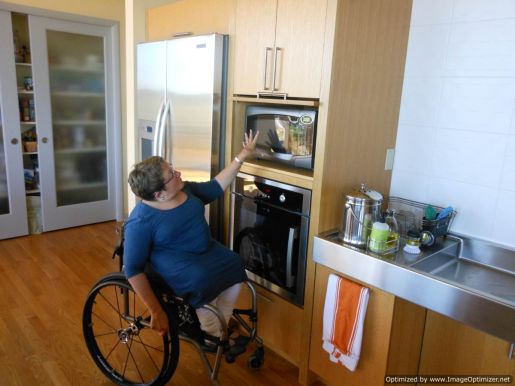You might also be interested in...
-
Abilities Expo puts people on the move
11/19/2012
-
American Home: New but not 'friendly'
03/24/2013
-
Book Review: The Accessible Home
05/31/2013
-
Book review: The Longevity Project
06/08/2011
-
Book review: The Roadmap to 100
06/01/2011
-
Book review: Unassisted Living
12/31/2013
-
Brick & mortar aging in place shop: Beverly's Daughter, Seattle
09/10/2013
-
House review: New American Home
07/30/2012
-
Product overview: User-friendly designs
09/09/2011
-
Product review: Easy chairs
02/15/2012
Book Review: The Accessible Home
Posted: 05/31/2013
By: Lynette Evans
Brian McMillan built this fully accessible -- and beautiful -- home after being paralyzed in a motorcycle accident. His house is profiled in "The Accessible Home."
Seen one, seen 'em all. That's the way I usually feel about books purporting to show people how to make our homes more accessible. But architect Deborah Pierce's "The Accessible Home: Designing for All Ages & Abilities" (Taunton, 2012) is not one of them.
Pierce not only profiles 25 homes whose architects and owners have solved their accessibility issues, but she provides lots of sidebars and informative tips that should be helpful for readers looking for ideas for their own homes. And, really, why else would one pick up a book like this, if not to research ideas for our own, or a loved one's home?
A number of the houses have been showcased in magazine articles or other books, including Karen Braitmayer's Seattle home and Brian McMillan's home in Missouri, but Pierce has edited the material to give the most useful information within the limited space of 234 pages.
Karen Braitmayer's mid-century home in Seattle has been modified to meet the needs of two wheelchair users. Read AFriendlyHouse's story of her house here.
The individual case studies begin on page 97, with prior pages devoted to describing universal design, accessibility and aging issues and taking the reader from curbside throughout a house to explain where accessibility issues may surface. Pierce gives orders, gently, such as "Plan carefully for an accessible site," "Design for mobility devices," "Design for aging in place" and by the time the reader reaches the case studies, she knows what she is looking for.
As with other home design books, the case study photos and illustrations are illuminating in themselves, but Pierce writes informative captions (something many writers don't) that further explain what the reader is seeing, and the book includes floor plans -- another attraction, especially for readers who may think accessible spaces must be larger than those of a typical house.
Internationally renowned architect Michael Graves, designer of accessible Wounded Warrior homes for the U.S. military and himself a wheelchair user, wrote the foreword. The afterword includes tips for finding the right architect and designer and websites for the architects and builders of the various case studies, when available.
As Pierce says: "Disabilities are an interaction between a person and the environment." Her book sets out to prove that "without barriers, there are no disabilities."
And, more than most books on accessibility and universal design, "The Accessible Home" fulfills its proposition.
10 lessons of accessible design
Pierce addressed attendees at the Universal Design Summit 5 in St. Louis in May, and shared the 10 lessons she learned while compiling the book. Read them here.


